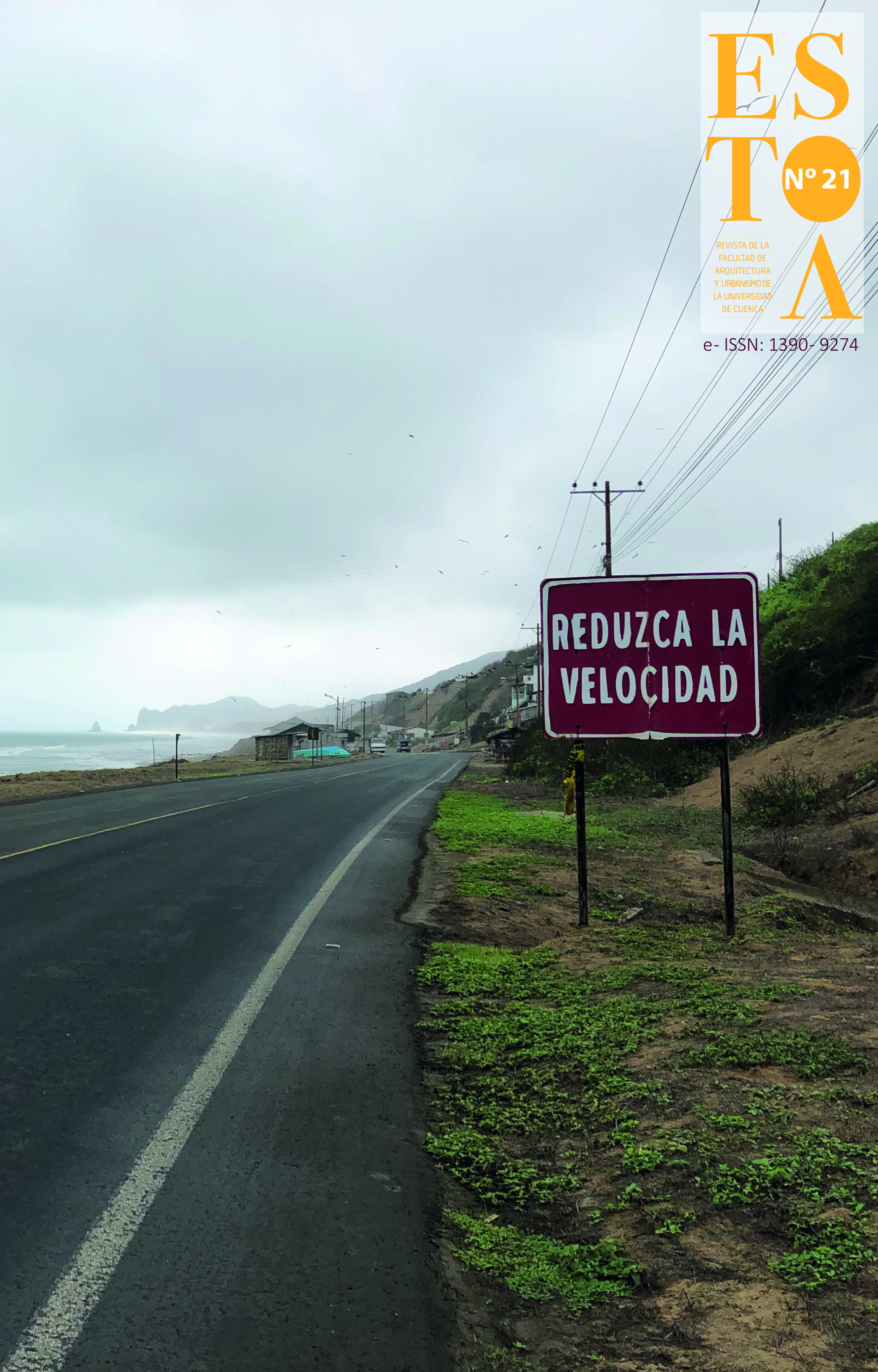The integrating chair. A transdisciplinary approach to teaching of architecture: FAU-UCE Case Study
DOI:
https://doi.org/10.18537/est.v011.n021.a07Keywords:
Integrative chair, teaching of architecture, theory and practice, project workshop, FAU-UCEAbstract
The Faculty of Architecture and Urbanism (FAU) of the Central University of Ecuador (UCE) has questioned the limits of the architectural discipline, to reflect on the current role of the profession, with the purpose of generating a new academic discourse that allows linking practice and theory within the architect’s training. The Higher Education Law requires a constant renewal of the academic curriculum, so that the offer is relevant and responds to contemporary problems. Thus, in order to develop an academic curriculum, not only is a process of analysis and constant feedback necessary, interdisciplinary or even transdisciplinary themes must also be built, both in undergraduate and postgraduate master’s degrees. An alternative solution is the integrative chair of applied knowledge in the vertical workshop of architectural projects that is complemented with theoretical and critical bases.
Downloads
References
Aldana, G. y Joya, N. (2011). Actitudes hacia la investigación científica de los docentes que orientan la asignatura de metodología de investigación. Tabula Rasa, (14), 295309.
Ascher, F. (2005). Ciudades con velocidad y movilidad múltiples: un desafío para los arquitectos, urbanistas y políticos. ARQ (Santiago), (60), 11-19.
Bermeo, S. (2019). Arquitectura de Flujos: El metasistema arquitectónico tardorracionalista en la hipermodernidad de las ciudades globales latinoamericanas. [Tesis doctoral, Universidad de Guadalajara- Centro Universitario de Arte, Arquitectura y Diseño].
Capel, H. (2002). Gritos amargos sobre la ciudad. Urban Perspectives, (1), 1-17.
Castells, M. (2006). La sociedad red: una visión global. Alianza Editorial.
Valdés Sáenz, M. A., Rodríguez Guerra, Y., y Díaz Valdés, K. (2017). La cátedra integradora en las mallas curriculares de las carreras universitarias. Revista científica FAREM-Estelí, (23) 97-109.
Durán, A. M. (2015). Arquitectura contemporánea de Ecuador (1999-2015): el florecimiento de una crisis. Rita: Revista Indexada de Textos Académicos, (3), 40-51.
Echeverria, M., y Bermeo, S. (2021). Arquitectura y Estudios Urbanos en la complejidad del siglo XXI. PURIQ, 3(4), 816-827.
FAU. (2012). Instructivo para la presentación del Informe de Autoevaluación Institucional, de Carreras o Programas para las Universidades y Escuelas Politécnicas del Ecuador. UCE.
Fisher, T. (2009). Making Criticism More Critical. JAE.
Freire, P. (2014). Pedagogía de la esperanza: un reencuentro con la pedagogía del oprimido. Siglo XXI.
Giglia, Á. (2007). El habitar y la cultura. Universidad Nacional Autónoma de México.
Triana, B., Romero, J., Pérez, O. y García, M. (2016). Gestión de los colectivos de años académicos en la educación superior cubana: tendencias históricas. Academia y Virtualidad , 9 (1), 41-51.
Ito, T. (1992). Architecture in a simulated city. Oz, 14(1), 1-10.
Kahler, E. (2015). ¿Qué es la Historia?. Fondo de Cultura.
Laski, H. J. (1930). Limitations of the expert. Harper´s Monthly Magazine 21, 101-109.
Lefebvre, H. (2017). El derecho a la ciudad. Capitán Swing Libros.
Lucca, E. (2017). Estrategias y metodologías de formación de equipos interdisciplinarios para trabajar en hábitat. Hábitat y sociedad, (10), 15-34.
Martín, M. (1984). La tipología en la Arquitectura [Tesis doctoral, Universidad de Las Palmas de Gran Canaria].
Moscoso-Zamora, V., y Quiñonez-Alvarado, E. (2018). Proyecto integrador de saberes, evidencia del resultado de aprendizaje. Revista Innova Research Journal, 3 (3), 84-94.
Mumford, L. (1968). Arte y técnica. Nueva Visión.
Oxman, N. (2012). Programming matter. Architectural Design, 82(2), 88-95.
Patiño, A. (2014). El pensamiento crítico como tarea central de la educación humanista. Didac (64), 3-9.
Pérez-Gómez, A. (2014). De la educación de Arquitectura. Universidad Iberoamericana de la ciudad de México.
Porter, D. (2000). ¿Why do architects wear black? En A. E. Toft (Ed.), Ethics in Architecture: Architectural Education in the Epoch of Virtuality. Arkitektskolen Aarhus.
Sarmiento, P. (2009). La enseñanza de la historia y el pensamiento crítico. Grupo Anaya, S.A.
Sassen, S., y Sennett, R. (20 de abril de 2020). Repensando el mañana. (E. F. Madrid, Entrevistador)
Schwab, K. (2016). La cuarta revolución industrial. Debate.
Till, J. (2009). Architecture depends. MIT press.
Vallejo, C. (2020). Voy a hablar de la esperanza. Litoral (234), 212-212.
Von Bertalanffy, L. (1993). Teoría general de los sistemas. Fondo de cultura económica.
Published
How to Cite
Issue
Section
License
Copyright (c) 2022 Estoa. Revista de la Facultad de Arquitectura y Urbanismo

This work is licensed under a Creative Commons Attribution-NonCommercial-ShareAlike 4.0 International License.
The Journal declines any responsibility for possible conflicts derived from the authorship of the works that are published in it.
The University of Cuenca in Ecuador conserves the patrimonial rights (copyright) of the published works and will favor the reuse of the same ones, these can be: copy, use, diffuse, transmit and expose publicly.
Unless otherwise indicated, all contents of the electronic edition are distributed under a Creative Commons Attribution-NonCommercial-ShareAlike 4.0 International License.




